It looks like you're using an Ad Blocker.
Please white-list or disable AboveTopSecret.com in your ad-blocking tool.
Thank you.
Some features of ATS will be disabled while you continue to use an ad-blocker.
share:
After reading this thread www.abovetopsecret.com..., it occurred to me that some members may actually be
interested in examining the fossil evidence of Homo neandertalensis instead of making bunny jokes befitting the Monty Python ensemble. This
thread does not make any major, definite inferences concerning Neanderthal demise, but does illustrate the highlights of the fossil record on this
most fascinating hominid species. Neanderthal, as most know by now, were not the dumb brutes that drove themselves to extinction through their own
ineptitude as many once mistakenly thought. In fact, to the contrary, they demonstrated a mastery over nature that earlier hominid species all but
failed to do. The fossil evidence shows that they were skillful, innovative, adaptive, and creative.
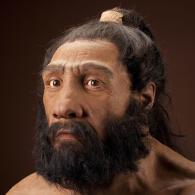
humanorigins.si.edu...
Although I am not an expert paleo-archaeologist, I am well-acquainted with the hominid fossil record and would like to give respect back to this marvelous species.
The binomial classification of the Neanderthal is Homo neandertalensis. To illustrate the confusion over how to classify this hominid species, some paleoanthropologists even include it as a subspecies of H. sapiens; identifying them as Homo sapiens-neandertalensis (whereas anatomically modern humans are referred to as H. sapiens sapiens.) When it comes down to it, Neanderthals are perhaps the closest hominid resembling anything to a human race, or subspecies. I, for one, find it astonishing and highly interesting to think that we shared the planet with another intelligent hominid species at one point.
Why the confusion over classifying them? Because Neanderthals are anatomically similar to modern humans, and sometimes fit neatly into the phylogenies of human evolution, but there is also enough variation, both in physical and genetic terms, to suggest that they were a unique, differentiated species. Neither conclusion can safely be called definite at this time. Evidence points in both directions.
The fossils
Neanderthal remains have been discovered ranging from about 500,000 years ago (Atapuerca, Spain) to as recently as 30,000 years. The so-called classic Neanderthal was primarily unearthed in Western Europe, but specimens have been found in East Europe as well as on the Western portion of the Asian continent.
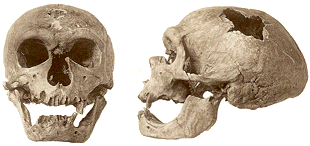
One of the most complete neandertalensis skeletons was discovered in Southwest France (La Chapelle-aux-Saints) in 1908. Pictured above, it is estimated to be roughly 50,000 years old. It was found in context with other hominid long bones and with a non-hominid long bone; along with animal bone fragments and flint tools. Because the skeletal remains were found in a unique ‘flexed’ position where the knees were drawn up to its chest, it was initially believed that this was not an erect-walking species.
humanorigins.si.edu...
Compared to anatomically modern humans, the Neanderthal shares a very similar skeletal structure, but has a marked robustness and prognathism (protrusion of the facial bones and features beyond the eye sockets; which is consistent with earlier hominids. Modern humans show very little prognathism.) Additionally, the Neanderthal has a shorter limb proportion than humans do. This is speculated to be an environmental adaptation to cold environments, and it is seen in some H. sapiens groups alive today. Consider the Inuit vs. the Masai—where limb proportion and length is correlated to the climate for the sake of conserving or releasing body heat (think surface area, etc.)

humanorigins.si.edu...
There are several other fossils found in this region of Europe (Neanderthal refers to the Neander Valley between France and Germany.) What is most intriguing about this location is that there were modern humans inhabiting this region at times contemporary to neandertalensis. It is hypothesized that the Neanderthals modified their existing tool technology based on the industry of anatomically modern humans. If this were the case, it is a proponent to show that information was being transmitted from one species to the other.
Furthermore, a Neanderthal burial site near Vindija, Croatia reveals some of the most convincing evolutionary links between H.neandertalensis and H. sapiens.
www.scientificamerican.com...
And we all know what happens when hominids co-habit, right?
www.scientificamerican.com...
The approximately 35 individuals recovered from this site dated 32K-42Kya show less prognathism, less robustness, and smaller brow ridges than their western European Neanderthal counterparts. In fact, they look surprisingly similar to modern humans of that chronology and region.
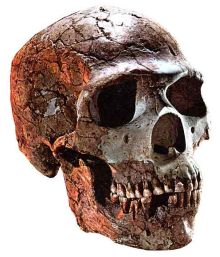
There was some question as to whether neandertalensis was capable of speech. A partial skeleton dating to about 60Kya was found in 1983 in Kebara, Israel, but it was the first time a hyoid bone was recovered. With this discovery came the very practical possibility that the Neanderthal had speech capabilities as the hyoid bone is an essential component for hominid vocalization. What is especially intriguing is how similar this 60,000 year old find is to hyoid bones found in modern humans. It is not unreasonable to assume that H. neandertalensis had language. We all know the significance between language and intelligence, right?
www.britannica.com...
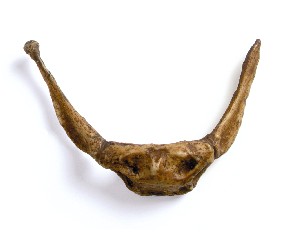
In Shanidar, Iraq was another important fossil find.
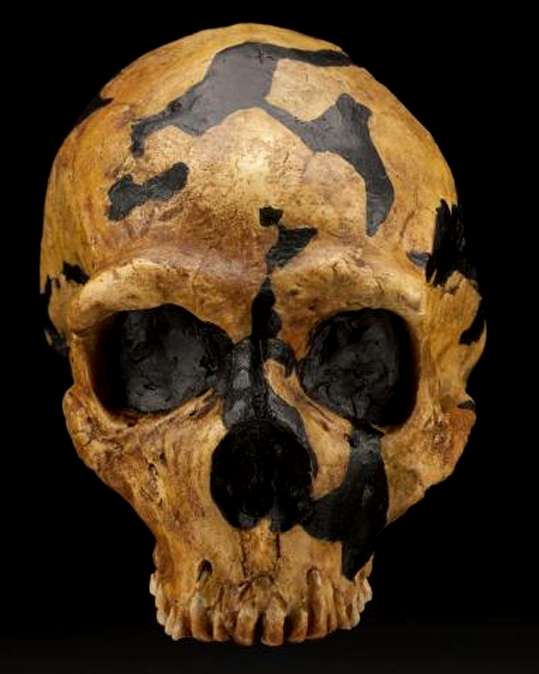
books.google.com...,+p.+341&source=bl&ots=FreDX9MQjD&sig=lWGyQ45kM1ua74-mWgR gMkHkxg4&hl=en&sa=X&ei=aN8yUZGXAtHa2wXu7YHoCQ&ved=0CDIQ6AEwAQ#v=onepage&q=trinkaus%20and%20shipman%201992%2C%20p.%20341&f=false
The fossils also reveal that this individual survived a number of years after receiving this trauma, very likely due to the charity of others. As a personal, unprofessional opinion , this evidence makes me look towards the possibility of Neanderthal having language once again. Similarly, Erik Trinkaus, who studied the remains in-depth cites this as an example of “Neandertal compassion.”
The culture
The Neanderthal improved upon previous stone tool industries. They used a technique (Mousterian) to produce more stone flakes from a core that could be fashioned into a variety of tools; primarily scrapers, points, and knives (each serving a specific purpose.)
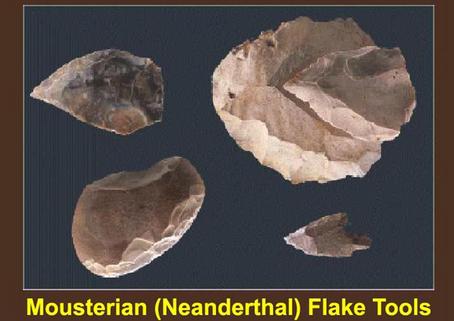
humanorigins.si.edu...
Although there is little evidence to suggest that the Neanderthal developed bone tools, they were expert craftsmen designing specialized tools for skinning, processing meat, hunting, fashioning wood, and even sewing. (Craftspeople though they were, modern H. sapiens may have had an edge when it came to hunting with the development of the atlatl. It is supported that humans had a significant hunting advantage with long-range projectile weapons; whereas neandertalensis had the thrusting spear.) It is also accepted that hunting large game was an especially dangerous subsistence method and the fossil record indicates that many individuals sustained head and neck injuries which Trinkaus found consistent with modern rodeo performers.
books.google.com... bFlHJR87_iEjAHS8&hl=en&sa=X&ei=m-UyUfjwL8XVrQGXuYDoCQ&ved=0CC0Q6AEwAA#v=onepage&q=berger%20and%20trinkaus%201995%20rodeo%20performers&f=false
Subsistence methods were diverse:
So, it can be established that a major staple in the Neanderthal diet was processed meat through hunting (which is also supported by their various stone tools for the tasks of hunting and processing meat etc.) But there is evidence that they exploited multiple food sources.
humanorigins.si.edu...
Did Neanderthal have a fashion sense? Probably not, but what they did have was purely functional and required some precise tailoring.
anthropology.net...
Another astonishing behavior that neandertalensis practiced was burial of their dead. Many of the archaeological sites containing Neanderthal remains have been determined to be burial sites containing multiple individuals. Think back to our first fossil example of the man found in La Chapelle-aux-Saints who was found in context with stone tools. Recall that he was also found in a ‘flexed’ position. As more Neanderthals were excavated, it was found that this was not just an arbitrary posture, but a deliberate one. Some burial sites have found skeletal remains in context with stone tools, deliberate placement of animal bones, a slab of stone resembling a burial marker, and even floral arrangements! Despite this, some doubt persists because of an apparent inconsistency with these burial behaviors.
bagheera.com...
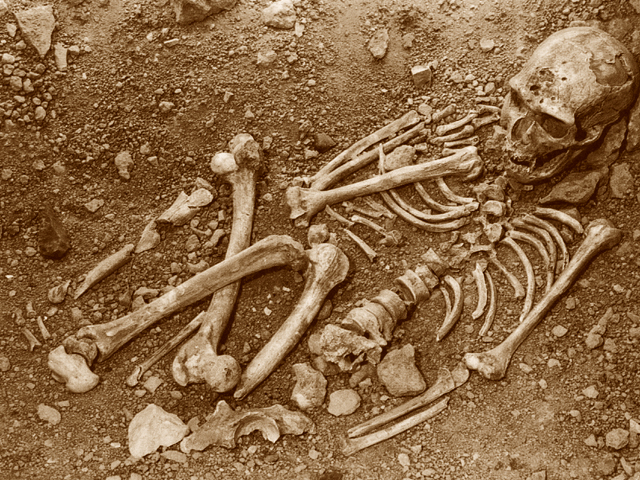
Synthesis
We know that Homo neandertalensis was a very sophisticated hominid compared to other hominid predecessors. We know that they had a relatively innovative stone tool industry that improved greatly on previous methods. We know that they cared for their injured and infirmed with successful results. We know that they had various subsistence methods and had multiple food sources. We know that they crafted ornamental pieces as well as functional garments. We know they were capable and creative when adapting to their environments.
It is surmised that they were capable of carrying out symbolic rituals such as deliberate burials.
It is possible (and if structure serves function) that the anatomically modern hyoid bone means that they probably had linguistic capabilities. (Though this is not entirely confirmed; DNA evidence may provide a breakthrough pertaining to language capability.)
But there is one other thing I’d like to point out concerning H. neandertalensis. We know that the Neanderthal was generally more robust and muscular than modern human counterparts, but one thing I feel that is chiefly ignored when considering the fossil and cultural evidence, is the comparatively larger cranial size.
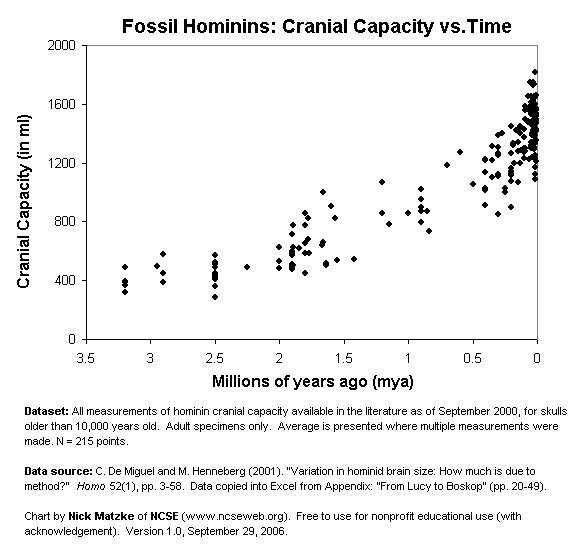

(note that #4 is an H. neandertalensis cranium and #5 is an H. sapiens cranium.
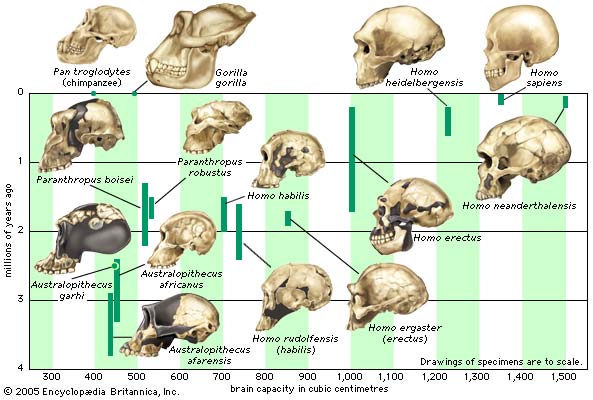
There is a rule in primatology that states (with good reason) that the larger the cranium capacity of the hominid, the greater is their potential to display intelligence. Of course hominids come in different sizes, so cranial capacity is only partially correlated to body size. But in cross-species comparisons of hominids, as body size increases, brain size/cranial volume increases at a different rate. However, generally, this rule is true and consistent when comparing hominids and their cranial volumes.
With the average cranial capacity for modern human specimens being about 1,300-1,400 cubic centimeters, and the average cranial capacity for Neanderthals being about 1,500 cubic centimeters (many specimens measuring over 1,600 cm cubed)—it would be realistic to assume that they possessed a competitive level of intelligence to modern humans.
This discrepancy in the model for hominid cranial capacity isn’t easy to dismiss, but perhaps there is a pragmatic way to explain the downfall of an intelligent hominid species: metabolic cost. The larger the brain, the more dire is the need for fuel to keep it functioning. Were the Neanderthals simply too smart for their own good? Did the metabolic cost of their larger brains ultimately lead to their downfall as they were unable to adapt to a sudden change in available foods? Combine that with the seemingly more versatile projectile tools that humans had developed. If there were a sudden change in available food sources, it could very well have come down to competition between hominid species. I’m hardly qualified to provide an answer, but find this to be one the most intriguing and profound mysteries in paleo-archaeology.
However, I find it very difficult to believe, as the theory is portrayed in my sister thread, that the Neanderthal was overcome by their inability to hunt rabbits. It is evident in the fossil evidence that they were capable of adapting to various regions and climates, were able to exploit multiple food sources, and were very likely capable of abstract, symbolic thought to some degree.
However, in respect to the other thread, I must concede that it is shown again and again that a sudden, drastic change in environment leads to the extinction of a species, and/or the death of a culture. Finding exactly what this sudden, unanticipated environmental change was will require more concrete evidence to sway my opinion.
[note on sources: most of the information shared here comes direct from my own notes, essays, and textbooks, but I have made an attempt to provide supplemental sources that, nonetheless, back up the claims to provide accurate information. If there is an instance where a source is lacking or incomplete, just ask me and I will resolve the issue.
Some information that I have shared may appear contradictory in relation to the supplemental online sources. I will provide an example: The excavation of La Chapelle-aux-Saints is said to be 60,000 years old in the humanorigins.edu source, but I have given precedence to my textbook source which establishes a date of about 50,000 years. Likewise, various sources may give differing averages of cranial capacities found among hominids. Again, I just have to give precedence to my notes and text; and again, the numbers will vary from source-to-source with different samples being measured etc.
Oh, and the source humanorigins.edu will take you directly to the overview page. Either have fun exploring the site,or ask me for any clarification on citations.
Any other confusion? Just ask!]

Neanderthals made and used a diverse set of sophisticated tools, controlled fire, lived in shelters, made and wore clothing, were skilled hunters of large animals and also ate plant foods, and occasionally made symbolic or ornamental objects. There is evidence that Neanderthals deliberately buried their dead and occasionally even marked their graves with offerings, such as flowers. No other primates, and no earlier human species, had ever practiced this sophisticated and symbolic behavior.
humanorigins.si.edu...
Although I am not an expert paleo-archaeologist, I am well-acquainted with the hominid fossil record and would like to give respect back to this marvelous species.
The binomial classification of the Neanderthal is Homo neandertalensis. To illustrate the confusion over how to classify this hominid species, some paleoanthropologists even include it as a subspecies of H. sapiens; identifying them as Homo sapiens-neandertalensis (whereas anatomically modern humans are referred to as H. sapiens sapiens.) When it comes down to it, Neanderthals are perhaps the closest hominid resembling anything to a human race, or subspecies. I, for one, find it astonishing and highly interesting to think that we shared the planet with another intelligent hominid species at one point.
Why the confusion over classifying them? Because Neanderthals are anatomically similar to modern humans, and sometimes fit neatly into the phylogenies of human evolution, but there is also enough variation, both in physical and genetic terms, to suggest that they were a unique, differentiated species. Neither conclusion can safely be called definite at this time. Evidence points in both directions.
The fossils
Neanderthal remains have been discovered ranging from about 500,000 years ago (Atapuerca, Spain) to as recently as 30,000 years. The so-called classic Neanderthal was primarily unearthed in Western Europe, but specimens have been found in East Europe as well as on the Western portion of the Asian continent.

One of the most complete neandertalensis skeletons was discovered in Southwest France (La Chapelle-aux-Saints) in 1908. Pictured above, it is estimated to be roughly 50,000 years old. It was found in context with other hominid long bones and with a non-hominid long bone; along with animal bone fragments and flint tools. Because the skeletal remains were found in a unique ‘flexed’ position where the knees were drawn up to its chest, it was initially believed that this was not an erect-walking species.
humanorigins.si.edu...
Compared to anatomically modern humans, the Neanderthal shares a very similar skeletal structure, but has a marked robustness and prognathism (protrusion of the facial bones and features beyond the eye sockets; which is consistent with earlier hominids. Modern humans show very little prognathism.) Additionally, the Neanderthal has a shorter limb proportion than humans do. This is speculated to be an environmental adaptation to cold environments, and it is seen in some H. sapiens groups alive today. Consider the Inuit vs. the Masai—where limb proportion and length is correlated to the climate for the sake of conserving or releasing body heat (think surface area, etc.)

With thick, short lower arm and leg bones making up a very strong and compact body, Neanderthals were more heavily built than modern humans and were more efficient at conserving body heat, allowing them to withstand living in cold climates during ice ages.
humanorigins.si.edu...
There are several other fossils found in this region of Europe (Neanderthal refers to the Neander Valley between France and Germany.) What is most intriguing about this location is that there were modern humans inhabiting this region at times contemporary to neandertalensis. It is hypothesized that the Neanderthals modified their existing tool technology based on the industry of anatomically modern humans. If this were the case, it is a proponent to show that information was being transmitted from one species to the other.
Furthermore, a Neanderthal burial site near Vindija, Croatia reveals some of the most convincing evolutionary links between H.neandertalensis and H. sapiens.
a team of investigators report that the most recent remains found in the Vindija cave…indicate that Neanderthals and modern man must have coexisted in central Europe for at least six millennia.
www.scientificamerican.com...
And we all know what happens when hominids co-habit, right?
Other findings from Vindija are even more intriguing. It appears that the two groups, at the very least, traded with each other--and may even have interbred.
www.scientificamerican.com...
The approximately 35 individuals recovered from this site dated 32K-42Kya show less prognathism, less robustness, and smaller brow ridges than their western European Neanderthal counterparts. In fact, they look surprisingly similar to modern humans of that chronology and region.

There was some question as to whether neandertalensis was capable of speech. A partial skeleton dating to about 60Kya was found in 1983 in Kebara, Israel, but it was the first time a hyoid bone was recovered. With this discovery came the very practical possibility that the Neanderthal had speech capabilities as the hyoid bone is an essential component for hominid vocalization. What is especially intriguing is how similar this 60,000 year old find is to hyoid bones found in modern humans. It is not unreasonable to assume that H. neandertalensis had language. We all know the significance between language and intelligence, right?
Notably, however, Kebara 2 includes a preserved bone from the base of the tongue (hyoid bone), which indicates a large mouth with the possibility of fully modern human speech capabilities.
www.britannica.com...

In Shanidar, Iraq was another important fossil find.

There had been a crushing blow to the left side of the head, fracturing the eye socket, displacing the left eye, and probably causing blindness on that side. He also sustained a massive blow to the right side of the body that so badly damaged the right arm that it became withered and useless; the bones of the shoulder blade, collar bone, and upper arm are much smaller and thinner than those on the left. The right lower arm and hand are missing, probably not because of poor preservation…but because they either atrophied and dropped off, or because they were amputated.
books.google.com...,+p.+341&source=bl&ots=FreDX9MQjD&sig=lWGyQ45kM1ua74-mWgR gMkHkxg4&hl=en&sa=X&ei=aN8yUZGXAtHa2wXu7YHoCQ&ved=0CDIQ6AEwAQ#v=onepage&q=trinkaus%20and%20shipman%201992%2C%20p.%20341&f=false
The fossils also reveal that this individual survived a number of years after receiving this trauma, very likely due to the charity of others. As a personal, unprofessional opinion , this evidence makes me look towards the possibility of Neanderthal having language once again. Similarly, Erik Trinkaus, who studied the remains in-depth cites this as an example of “Neandertal compassion.”
The culture
The Neanderthal improved upon previous stone tool industries. They used a technique (Mousterian) to produce more stone flakes from a core that could be fashioned into a variety of tools; primarily scrapers, points, and knives (each serving a specific purpose.)

The Mousterian stone tool industry of Neanderthals is characterized by sophisticated flake tools that were detached from a prepared stone core. This innovative technique allowed flakes of predetermined shape to be removed and fashioned into tools from a single suitable stone.
humanorigins.si.edu...
Although there is little evidence to suggest that the Neanderthal developed bone tools, they were expert craftsmen designing specialized tools for skinning, processing meat, hunting, fashioning wood, and even sewing. (Craftspeople though they were, modern H. sapiens may have had an edge when it came to hunting with the development of the atlatl. It is supported that humans had a significant hunting advantage with long-range projectile weapons; whereas neandertalensis had the thrusting spear.) It is also accepted that hunting large game was an especially dangerous subsistence method and the fossil record indicates that many individuals sustained head and neck injuries which Trinkaus found consistent with modern rodeo performers.
books.google.com... bFlHJR87_iEjAHS8&hl=en&sa=X&ei=m-UyUfjwL8XVrQGXuYDoCQ&ved=0CC0Q6AEwAA#v=onepage&q=berger%20and%20trinkaus%201995%20rodeo%20performers&f=false
Subsistence methods were diverse:
Isotopic chemical analyses of Neanderthal bones also tell scientists the average Neanderthal’s diet consisted of a lot of meat… There is also evidence from Gibraltar that when they lived in coastal areas, they exploited marine resources such as mollusks, seals, dolphins and fish.
So, it can be established that a major staple in the Neanderthal diet was processed meat through hunting (which is also supported by their various stone tools for the tasks of hunting and processing meat etc.) But there is evidence that they exploited multiple food sources.
Scientists have also found plaque on the remains of molar teeth containing starch grains—concrete evidence that Neandertals ate plants.
humanorigins.si.edu...
Did Neanderthal have a fashion sense? Probably not, but what they did have was purely functional and required some precise tailoring.
Neanderthals faced a considerable heat loss problem. Wearing tailored clothes or some similar measure was necessary for survival. An animal skin across the shoulder would not have sufficed to survive even average cold winter temperatures and body cooling by convection caused by wind. Clothes and particularly footwear had to be sewn together tightly in order to prevent intrusion of water or snow.
anthropology.net...
Another astonishing behavior that neandertalensis practiced was burial of their dead. Many of the archaeological sites containing Neanderthal remains have been determined to be burial sites containing multiple individuals. Think back to our first fossil example of the man found in La Chapelle-aux-Saints who was found in context with stone tools. Recall that he was also found in a ‘flexed’ position. As more Neanderthals were excavated, it was found that this was not just an arbitrary posture, but a deliberate one. Some burial sites have found skeletal remains in context with stone tools, deliberate placement of animal bones, a slab of stone resembling a burial marker, and even floral arrangements! Despite this, some doubt persists because of an apparent inconsistency with these burial behaviors.
bagheera.com...

Synthesis
We know that Homo neandertalensis was a very sophisticated hominid compared to other hominid predecessors. We know that they had a relatively innovative stone tool industry that improved greatly on previous methods. We know that they cared for their injured and infirmed with successful results. We know that they had various subsistence methods and had multiple food sources. We know that they crafted ornamental pieces as well as functional garments. We know they were capable and creative when adapting to their environments.
It is surmised that they were capable of carrying out symbolic rituals such as deliberate burials.
It is possible (and if structure serves function) that the anatomically modern hyoid bone means that they probably had linguistic capabilities. (Though this is not entirely confirmed; DNA evidence may provide a breakthrough pertaining to language capability.)
But there is one other thing I’d like to point out concerning H. neandertalensis. We know that the Neanderthal was generally more robust and muscular than modern human counterparts, but one thing I feel that is chiefly ignored when considering the fossil and cultural evidence, is the comparatively larger cranial size.


(note that #4 is an H. neandertalensis cranium and #5 is an H. sapiens cranium.

There is a rule in primatology that states (with good reason) that the larger the cranium capacity of the hominid, the greater is their potential to display intelligence. Of course hominids come in different sizes, so cranial capacity is only partially correlated to body size. But in cross-species comparisons of hominids, as body size increases, brain size/cranial volume increases at a different rate. However, generally, this rule is true and consistent when comparing hominids and their cranial volumes.
With the average cranial capacity for modern human specimens being about 1,300-1,400 cubic centimeters, and the average cranial capacity for Neanderthals being about 1,500 cubic centimeters (many specimens measuring over 1,600 cm cubed)—it would be realistic to assume that they possessed a competitive level of intelligence to modern humans.
This discrepancy in the model for hominid cranial capacity isn’t easy to dismiss, but perhaps there is a pragmatic way to explain the downfall of an intelligent hominid species: metabolic cost. The larger the brain, the more dire is the need for fuel to keep it functioning. Were the Neanderthals simply too smart for their own good? Did the metabolic cost of their larger brains ultimately lead to their downfall as they were unable to adapt to a sudden change in available foods? Combine that with the seemingly more versatile projectile tools that humans had developed. If there were a sudden change in available food sources, it could very well have come down to competition between hominid species. I’m hardly qualified to provide an answer, but find this to be one the most intriguing and profound mysteries in paleo-archaeology.
However, I find it very difficult to believe, as the theory is portrayed in my sister thread, that the Neanderthal was overcome by their inability to hunt rabbits. It is evident in the fossil evidence that they were capable of adapting to various regions and climates, were able to exploit multiple food sources, and were very likely capable of abstract, symbolic thought to some degree.
However, in respect to the other thread, I must concede that it is shown again and again that a sudden, drastic change in environment leads to the extinction of a species, and/or the death of a culture. Finding exactly what this sudden, unanticipated environmental change was will require more concrete evidence to sway my opinion.
[note on sources: most of the information shared here comes direct from my own notes, essays, and textbooks, but I have made an attempt to provide supplemental sources that, nonetheless, back up the claims to provide accurate information. If there is an instance where a source is lacking or incomplete, just ask me and I will resolve the issue.
Some information that I have shared may appear contradictory in relation to the supplemental online sources. I will provide an example: The excavation of La Chapelle-aux-Saints is said to be 60,000 years old in the humanorigins.edu source, but I have given precedence to my textbook source which establishes a date of about 50,000 years. Likewise, various sources may give differing averages of cranial capacities found among hominids. Again, I just have to give precedence to my notes and text; and again, the numbers will vary from source-to-source with different samples being measured etc.
Oh, and the source humanorigins.edu will take you directly to the overview page. Either have fun exploring the site,or ask me for any clarification on citations.
Any other confusion? Just ask!]
edit on 3-3-2013 by NarcolepticBuddha because: (no reason given)
The fossil evidence shows that they were skillful, innovative, adaptive, and creative.
Apparently not enough to beat out the homosapiens. Survival of the fittest in nature is the rule.
reply to post by NarcolepticBuddha
Thanks for this.
I have been spending the last couple months reading everything I can on neanderthal.
Most people will try and claim he was a brute and unsophisticated.
The truth is, they have not read more than a lame opinion piece in the last ten years about Neanderthal.
He was AS sophisticated as us in MANY regards, and in some MORE sophisticated.
Complex speech, complex tools and prolific wood working, musical instruments, elaborate decorations, symbolism, ritualistic burials, caring for the elderly and injured, some form of spirituality which used red iron oxide magnetite, primitive forms of agriculture and man made structures made out of hide, wood and bone, (in Italy which was isolated from other hominids, so it was NOT learned from them),
The list goes on and on......
BUT the older generation that would call someone "dumb" by inferring they were neanderthals, will have a hard time erasing the knee jerk reaction of thinking Neanderthal = dumb.......They will NEVER accept the fact that Neanderthal was just about as advanced as anyone around today, and had certain natural traits that far exceeded our own.
BUT bit by bit we can educate the younger ones to not be so blind as to ignore the plethora of new discoveries.
Thanks again for this thread.....
Thanks for this.
I have been spending the last couple months reading everything I can on neanderthal.
Most people will try and claim he was a brute and unsophisticated.
The truth is, they have not read more than a lame opinion piece in the last ten years about Neanderthal.
He was AS sophisticated as us in MANY regards, and in some MORE sophisticated.
Complex speech, complex tools and prolific wood working, musical instruments, elaborate decorations, symbolism, ritualistic burials, caring for the elderly and injured, some form of spirituality which used red iron oxide magnetite, primitive forms of agriculture and man made structures made out of hide, wood and bone, (in Italy which was isolated from other hominids, so it was NOT learned from them),
The list goes on and on......
BUT the older generation that would call someone "dumb" by inferring they were neanderthals, will have a hard time erasing the knee jerk reaction of thinking Neanderthal = dumb.......They will NEVER accept the fact that Neanderthal was just about as advanced as anyone around today, and had certain natural traits that far exceeded our own.
BUT bit by bit we can educate the younger ones to not be so blind as to ignore the plethora of new discoveries.
Thanks again for this thread.....
Originally posted by Hopechest
The fossil evidence shows that they were skillful, innovative, adaptive, and creative.
Apparently not enough to beat out the homosapiens. Survival of the fittest in nature is the rule.
Read my thesis again. In fact, read the thread while you're at it. It's pretty obvious that Homo sapiens is here and that Homo neandertalensis isn't. All I did was give a brief introduction to the fossil record demonstrating that they weren't the morons some people assume they were.
The ability to wipe out an entire species is certainly a human trademark, but it in no way reflects our intelligence and capability as a species (or does it? )
Thanks for your one-line post that contributes nothing to my thread.
edit on 3-3-2013 by NarcolepticBuddha because: (no reason
given)
I thoroughly enjoyed this. Your efforts in this are greatly appreciated. Thank you
Posted Via ATS Mobile: m.abovetopsecret.com
reply to post by tadaman
Replies and posts like yours are exactly what makes my effort and hours spent worth it! It looks like you know quite a bit on the subject, and I invite you to share any sources you have.
I tried my best to stick to the peer reviewed, mainstream facts. And that's all the OP needed, I think. But you are exactly correct! The list goes on.
My physical anthro professor designated an entire class and lab period to discussing these other "alternative" findings and theories. We discussed their obsidian scalpels (which surgeons are starting to use instead of stainless steel,) their successful examples of surgery (new bone growth means the patient survived,) etc. etc.
And why were they practicing trepanation of the skull?
It is a fascinating subject, I agree. And like my physical anthro professor said, "Give any new archaeological discovery 10 years before the facts are in."
So, the latest, greatest discoveries are only snap judgements and interpretations of new evidence. Please share any relevant info you have! Thanks for taking the time to examine my thread and give a meaningful contribution!
Replies and posts like yours are exactly what makes my effort and hours spent worth it! It looks like you know quite a bit on the subject, and I invite you to share any sources you have.
I tried my best to stick to the peer reviewed, mainstream facts. And that's all the OP needed, I think. But you are exactly correct! The list goes on.
My physical anthro professor designated an entire class and lab period to discussing these other "alternative" findings and theories. We discussed their obsidian scalpels (which surgeons are starting to use instead of stainless steel,) their successful examples of surgery (new bone growth means the patient survived,) etc. etc.
And why were they practicing trepanation of the skull?
It is a fascinating subject, I agree. And like my physical anthro professor said, "Give any new archaeological discovery 10 years before the facts are in."
So, the latest, greatest discoveries are only snap judgements and interpretations of new evidence. Please share any relevant info you have! Thanks for taking the time to examine my thread and give a meaningful contribution!
edit on 3-3-2013 by NarcolepticBuddha because: (no reason
given)
Originally posted by NarcolepticBuddha
Originally posted by Hopechest
The fossil evidence shows that they were skillful, innovative, adaptive, and creative.
Apparently not enough to beat out the homosapiens. Survival of the fittest in nature is the rule.
Read my thesis again. In fact, read the thread while you're at it. It's pretty obvious that Homo sapiens is here and that Homo neandertalensis isn't. All I did was give a brief introduction to the fossil record demonstrating that they weren't the morons some people assume they were.
The ability to wipe out an entire species is certainly a human trademark, but it in no way reflects our intelligence and capability as a species.
Thanks for your one-line post that contributes nothing to my thread.edit on 3-3-2013 by NarcolepticBuddha because: (no reason given)
They weren't that intelligent according to fossil records because they obviously weren't wiped out by disease they were wiped out by limited access to resources.
They couldn't adapt.
Homosapien took over their territory and they behaved like sheep, there is very limited evidence of warfare, basically they were never meant to progress as the other early species of humans weren't.
Natural selection.
It is akin to comparing us to apes.
edit on 3-3-2013 by Hopechest because: (no reason given)
reply to post by Hopechest
Actually there is evidence that they were very good hunters. Their physical make up provided a very robust and strong body capable of overpowering a catch.
It's thought however, that they were slow because of this, but that in stead they had developed a hunting technique based on stalking in groups.
We don't know what caused them to disappear. But we've lost countless capable species of life on this planet due to completely unforeseen natural events.
We, us superior kings of muck, could be wiped out by a germ. All it takes is the right one, at the right time...
I joked in the other thread, because it was that time of the day. no sleep and a dopey winofiend makes a retard. lol but the subject is one I find very interesting.
Cheers op.
Actually there is evidence that they were very good hunters. Their physical make up provided a very robust and strong body capable of overpowering a catch.
It's thought however, that they were slow because of this, but that in stead they had developed a hunting technique based on stalking in groups.
We don't know what caused them to disappear. But we've lost countless capable species of life on this planet due to completely unforeseen natural events.
We, us superior kings of muck, could be wiped out by a germ. All it takes is the right one, at the right time...
I joked in the other thread, because it was that time of the day. no sleep and a dopey winofiend makes a retard. lol but the subject is one I find very interesting.
Cheers op.
Bookmarking for later, wow, this looks like a great read and a very comprehensive thread posting. Thanks!!! I love the neanderthal history, they have
seen villification in the past and seemingly are now finding their true spot in the historical record.
Originally posted by Hopechest
They weren't that intelligent according to fossil records because they obviously weren't wiped out by disease they were wiped out by limited access to resources.
They couldn't adapt.
Homosapien took over their territory and they behaved like sheep, there is very limited evidence of warfare, basically they were never meant to progress as the other early species of humans weren't.
Natural selection.
It is akin to comparing us to apes.edit on 3-3-2013 by Hopechest because: (no reason given)
Huh? Neanderthals lived relatively short and precarious lives. Some died young and few lived beyond the age of 40 to 45 years. Debilitating diseases affected them and they were plagued by a variety of injuries and illnesses, ranging from bone fractures to gum disease.
Do you have any peer-reviewed sources to corroborate these bold claims of yours?
Regarding the OP's thread, nice job on this introductory excursion into the past life of Homo neanderthalensis! However, based off of reconstructions of the Neanderthal vocal tract, it's likely that they could not have produced the full range of sounds necessary for modern speech - a capacity for language was much more restricted in Neanderthals because their basicrania has a less humped profile. They probably did not have the capacity to convey meaning through a complex language system similar to ours.
reply to post by NarcolepticBuddha
here you go. I will post the rest later.
dnaconsultants.com...
io9.com...
en.wikipedia.org...
www.visual-arts-cork.com...
www.dailymail.co.uk...
realhistoryww.com...
www.perceptions.couk.com...
ahotcupofjoe.net...
I disagree with this one, but its good.
www.newscientist.com...
blogs.discovermagazine.com...
en.wikipedia.org...
www.skeptically.org...
www.raising-redheads.com...
www.burlingtonnews.net...
en.wikipedia.org...
sites.google.com...
books.google.es... #v=onepage&q=american%20prehistoric%20furnace&f=false
tatjana-mihaela.hubpages.com...
www.salagram.net...
history1900s.about.com...
s1.zetaboards.com...
www.forteantimes.com...
news.leiden.edu...
australia.gov.au...
en.wikipedia.org...
www.unexplained-mysteries.com...
www.crystalinks.com...
kachina2012.wordpress.com...
www.bibliotecapleyades.net...
www.celticnz.co.nz...
creation.com...
www.thestoneage.org...
www.icr.org...
www.sciencedaily.com...
curiosity.discovery.com...
blogs.discovermagazine.com...
www.newscientist.com...
www.google.com... 0.81.81.1.1.0.les%3B..0.0...1c.1.fiIQv6_RYIg
en.wikipedia.org...
news.nationalgeographic.com...
www.newscientist.com...
www.nytimes.com...
www.bibliotecapleyades.net...
www.telegraph.co.uk...
www.smithsonianmag.com...
www.sciencedaily.com...
warincontext.org...
www.sciencedaily.com...
en.wikipedia.org...
news.softpedia.com...
en.wikipedia.org...
news.softpedia.com...
There are some in there that I found related, but ultimately are pseudo science. They are still a good/ fun read.
I will post the rest of them once I get home. I keep the more in depth and scholarly links at home where I have time to sit and read them without distractions.
here you go. I will post the rest later.
dnaconsultants.com...
io9.com...
en.wikipedia.org...
www.visual-arts-cork.com...
www.dailymail.co.uk...
realhistoryww.com...
www.perceptions.couk.com...
ahotcupofjoe.net...
I disagree with this one, but its good.
www.newscientist.com...
blogs.discovermagazine.com...
en.wikipedia.org...
www.skeptically.org...
www.raising-redheads.com...
www.burlingtonnews.net...
en.wikipedia.org...
sites.google.com...
books.google.es... #v=onepage&q=american%20prehistoric%20furnace&f=false
tatjana-mihaela.hubpages.com...
www.salagram.net...
history1900s.about.com...
s1.zetaboards.com...
www.forteantimes.com...
news.leiden.edu...
australia.gov.au...
en.wikipedia.org...
www.unexplained-mysteries.com...
www.crystalinks.com...
kachina2012.wordpress.com...
www.bibliotecapleyades.net...
www.celticnz.co.nz...
creation.com...
www.thestoneage.org...
www.icr.org...
www.sciencedaily.com...
curiosity.discovery.com...
blogs.discovermagazine.com...
www.newscientist.com...
www.google.com... 0.81.81.1.1.0.les%3B..0.0...1c.1.fiIQv6_RYIg
en.wikipedia.org...
news.nationalgeographic.com...
www.newscientist.com...
www.nytimes.com...
www.bibliotecapleyades.net...
www.telegraph.co.uk...
www.smithsonianmag.com...
www.sciencedaily.com...
warincontext.org...
www.sciencedaily.com...
en.wikipedia.org...
news.softpedia.com...
en.wikipedia.org...
news.softpedia.com...
There are some in there that I found related, but ultimately are pseudo science. They are still a good/ fun read.
I will post the rest of them once I get home. I keep the more in depth and scholarly links at home where I have time to sit and read them without distractions.
edit on 3-3-2013 by tadaman because: (no reason given)
Originally posted by IEtherianSoul9
However, based off of reconstructions of the Neanderthal vocal tract, it's likely that they could not have produced the full range of sounds necessary for modern speech - a capacity for language was much more restricted in Neanderthals because their basicrania has a less humped profile. They probably did not have the capacity to convey meaning through a complex language system similar to ours.
Thanks for this addition. You are correct, and this is why the debate still rages on (even among professionals.) There are some who believe that they possibly utilized rudimentary vocalizations, but not exactly a language rivaling the range and complexity of modern Homo sapiens.
Still, the hyoid bone is a most significant find because it is part of the voice box. I tend to lean more toward the attitude that "structure serves function."
The primary role of the hyoid bone is to support the weight of the tongue, allowing people to articulate words while speaking, and enabling the production of a wide range of vocalizations...Without the hyoid bone, humans would be incapable of speech as we know it, so this bone represents a major step in human evolution.
www.wisegeek.com...
edit on 3-3-2013 by NarcolepticBuddha because: (no reason given)
That's right, I'm going to post something off-topic on my own thread. You may have noticed that I refer to Neanderthal under the name of Homo
neandertalensis omitting the 'h' that I use in Neanderthal.
This is entirely inconsequential and is just a technical preference that some physical anthropologists follow. (I'm not an anthropologist, just a student. I couldn't afford graduate school, oh well.)
Both Neanderthal (old spelling) and Neandertal (modern spelling--which is only common in academic circles) are correct. Actually, the correct taxonomic naming should look like this: Homo neanderthalensis when referring to Neandertals. You can see I got that backwards throughout the entire OP
(just your useless trivia for the thread. Hey, I own up to my mistakes alright? Especially since it's too late to edit)
This is entirely inconsequential and is just a technical preference that some physical anthropologists follow. (I'm not an anthropologist, just a student. I couldn't afford graduate school, oh well.)
Both Neanderthal (old spelling) and Neandertal (modern spelling--which is only common in academic circles) are correct. Actually, the correct taxonomic naming should look like this: Homo neanderthalensis when referring to Neandertals. You can see I got that backwards throughout the entire OP
(just your useless trivia for the thread. Hey, I own up to my mistakes alright? Especially since it's too late to edit)
edit on 3-3-2013 by
NarcolepticBuddha because: (no reason given)
Thanks OP for a great post.
I just wanted to share a portion a documentary I watched just last week.
This shows just how Neanderthal we still are, as humans emerged from Africa, they met Neanderthals from Europe, and they bred.
www.youtube.com...
Some of the Neanderthal kickers will have their heads turned pretty quickly, after watching too.
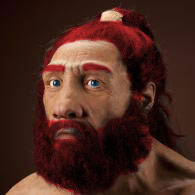
I just wanted to share a portion a documentary I watched just last week.
This shows just how Neanderthal we still are, as humans emerged from Africa, they met Neanderthals from Europe, and they bred.
www.youtube.com...
Some of the Neanderthal kickers will have their heads turned pretty quickly, after watching too.

edit on 3-3-2013 by Watchfull because: pic added
reply to post by Akragon
Yeah, everybody's in favor of grave-robbing until they realize we're digging up their great-uncle Fred. Who knows, maybe in 60,000 years someone will dig me up and use me as an example of the dumb, archaic Homo sapiens because they find me in context with some Spider-Man comics and a McDonald's wrapper
Yeah, everybody's in favor of grave-robbing until they realize we're digging up their great-uncle Fred. Who knows, maybe in 60,000 years someone will dig me up and use me as an example of the dumb, archaic Homo sapiens because they find me in context with some Spider-Man comics and a McDonald's wrapper
edit on 3-3-2013 by NarcolepticBuddha because: (no reason given)
reply to post by Watchfull
Can you please give me the link to the full documentary? (Edit: I've posted it below.) I'd love to watch it! Please share the full doc with us, thanks.
Anyway, thanks for posting. I enjoyed this tidbit that I've never seen before.
Edit: I see...the full documentary is more about hominid lineage, evolution, and migration? I'd love to see the whole thing, but couldn't find it on youtube
HERE IS THE DOCUMENTARY IN FULL:
Can you please give me the link to the full documentary? (Edit: I've posted it below.) I'd love to watch it! Please share the full doc with us, thanks.
Anyway, thanks for posting. I enjoyed this tidbit that I've never seen before.
Edit: I see...the full documentary is more about hominid lineage, evolution, and migration? I'd love to see the whole thing, but couldn't find it on youtube
HERE IS THE DOCUMENTARY IN FULL:
edit on 3-3-2013 by NarcolepticBuddha because: (no reason given)
I thought I would post a link to a thread I did under a different profile. I was hesitant to since my theory about neanderthal is "out there", but the
thread had many contributions with some good information so I thought it might be helpful here. All the above links I posted are from this thread.
Like I said I will post the other links not included in this thread when I get home. They are for the second part of this other thread that I hadnt gotten to yet
Since I have started a new profile I was going to make a new thread which included ALL the material I am putting together. The second part has more DNA evidence and focuses on a couple traits and genetic markers I use to map the migrations around the world.
I am about a couple hours from getting home and being able to post it all, and to tell you the truth I am really excited. I would rather participate in your thread than wait another couple months until I finish all my reading.
I will try and provide a break down of the second part here which will outline everything I have learned so far.
here is the old thread I am talking about.
www.abovetopsecret.com...
Like I said I will post the other links not included in this thread when I get home. They are for the second part of this other thread that I hadnt gotten to yet
Since I have started a new profile I was going to make a new thread which included ALL the material I am putting together. The second part has more DNA evidence and focuses on a couple traits and genetic markers I use to map the migrations around the world.
I am about a couple hours from getting home and being able to post it all, and to tell you the truth I am really excited. I would rather participate in your thread than wait another couple months until I finish all my reading.
I will try and provide a break down of the second part here which will outline everything I have learned so far.
here is the old thread I am talking about.
www.abovetopsecret.com...
edit on 3-3-2013 by tadaman because: (no reason given)
reply to post by NarcolepticBuddha
It's your lucky day.
www.youtube.com...
This was the first of a series called Meet the Izzards, on the BBC, so grab it quickly, before the Beeb snatches it back.
It's your lucky day.
www.youtube.com...
This was the first of a series called Meet the Izzards, on the BBC, so grab it quickly, before the Beeb snatches it back.
reply to post by tadaman
Ahhhh, so that was your thread, eh? I did do a search on this topic and this was the only one that was even remotely relevant to the subject. However, I wanted to just give a brief overview. I have definitely heard plenty of outlandish theories regarding the Neandertals. (I've even heard that they used telepathy to communicate, which their larger brains allowed them to do )
I posted this thread to seek out members like you to get some coherent discussion on the fossil evidence, and to hear the far-out speculations.
Thanks for providing your research and your thread I wouldn't go so far as to say that they were superior in every measure. There are advantages and disadvantages to the morphology of all organisms (remember I mentioned the metabolic cost of their larger brains?) I like to think we were pretty comparable in intelligence because we displayed some similar behaviors at the same times. There are, however, some subtle differences. And at one point Homo sapiens just started showboating while the Neandertals appeared to be dwindling to a stop.
It is a great mystery for sure, but those are the best kinds.
(By the way, I was thinking of a Bill Murray quote earlier today that really cheered me up)
Ahhhh, so that was your thread, eh? I did do a search on this topic and this was the only one that was even remotely relevant to the subject. However, I wanted to just give a brief overview. I have definitely heard plenty of outlandish theories regarding the Neandertals. (I've even heard that they used telepathy to communicate, which their larger brains allowed them to do )
I posted this thread to seek out members like you to get some coherent discussion on the fossil evidence, and to hear the far-out speculations.
Thanks for providing your research and your thread I wouldn't go so far as to say that they were superior in every measure. There are advantages and disadvantages to the morphology of all organisms (remember I mentioned the metabolic cost of their larger brains?) I like to think we were pretty comparable in intelligence because we displayed some similar behaviors at the same times. There are, however, some subtle differences. And at one point Homo sapiens just started showboating while the Neandertals appeared to be dwindling to a stop.
It is a great mystery for sure, but those are the best kinds.
(By the way, I was thinking of a Bill Murray quote earlier today that really cheered me up)
edit on 3-3-2013 by NarcolepticBuddha because:
(no reason given)
new topics
-
NYPD arrests migrant who allegedly set woman on fire on subway train, watched her burn to death
Breaking Alternative News: 1 hours ago -
Chef Gerald R. Ford
Food and Cooking: 4 hours ago -
The clotting is not going away latest
Medical Issues & Conspiracies: 4 hours ago -
F-18 shot down over Red Sea....by our own Destroyer?
Other Current Events: 6 hours ago -
California Business Owners Blindsided by Surprise Payroll Taxes
US Political Madness: 6 hours ago -
Anti-Government Protest in Serbia
Social Issues and Civil Unrest: 11 hours ago
top topics
-
California Business Owners Blindsided by Surprise Payroll Taxes
US Political Madness: 6 hours ago, 20 flags -
The Effects of Electric Fields and Plasma on Plant Growth
Science & Technology: 12 hours ago, 9 flags -
The clotting is not going away latest
Medical Issues & Conspiracies: 4 hours ago, 9 flags -
Anti-Government Protest in Serbia
Social Issues and Civil Unrest: 11 hours ago, 6 flags -
F-18 shot down over Red Sea....by our own Destroyer?
Other Current Events: 6 hours ago, 5 flags -
NYPD arrests migrant who allegedly set woman on fire on subway train, watched her burn to death
Breaking Alternative News: 1 hours ago, 4 flags -
Chef Gerald R. Ford
Food and Cooking: 4 hours ago, 2 flags
active topics
-
NYPD arrests migrant who allegedly set woman on fire on subway train, watched her burn to death
Breaking Alternative News • 8 • : WeMustCare -
Smartest Man in the World Tells His Theory About What Happens At Death
Philosophy and Metaphysics • 52 • : DeadeyeJedi -
California Business Owners Blindsided by Surprise Payroll Taxes
US Political Madness • 10 • : xuenchen -
The clotting is not going away latest
Medical Issues & Conspiracies • 7 • : annonentity -
The Effects of Electric Fields and Plasma on Plant Growth
Science & Technology • 6 • : ChaoticOrder -
F-18 shot down over Red Sea....by our own Destroyer?
Other Current Events • 7 • : Xtrozero -
The truth lets admit it
Aliens and UFOs • 78 • : DaydreamerX -
Incoming TRUMP Admin will Declare a National Emergency to Mass Deport People Here Illegally.
Social Issues and Civil Unrest • 128 • : WeMustCare -
-@TH3WH17ERABB17- -Q- ---TIME TO SHOW THE WORLD--- -Part- --44--
Dissecting Disinformation • 3789 • : 777Vader -
U.S. Officially Withdraws From the World Health Organization
Breaking Alternative News • 77 • : WeMustCare
